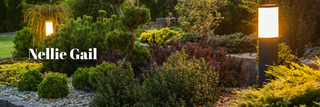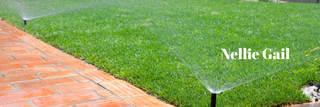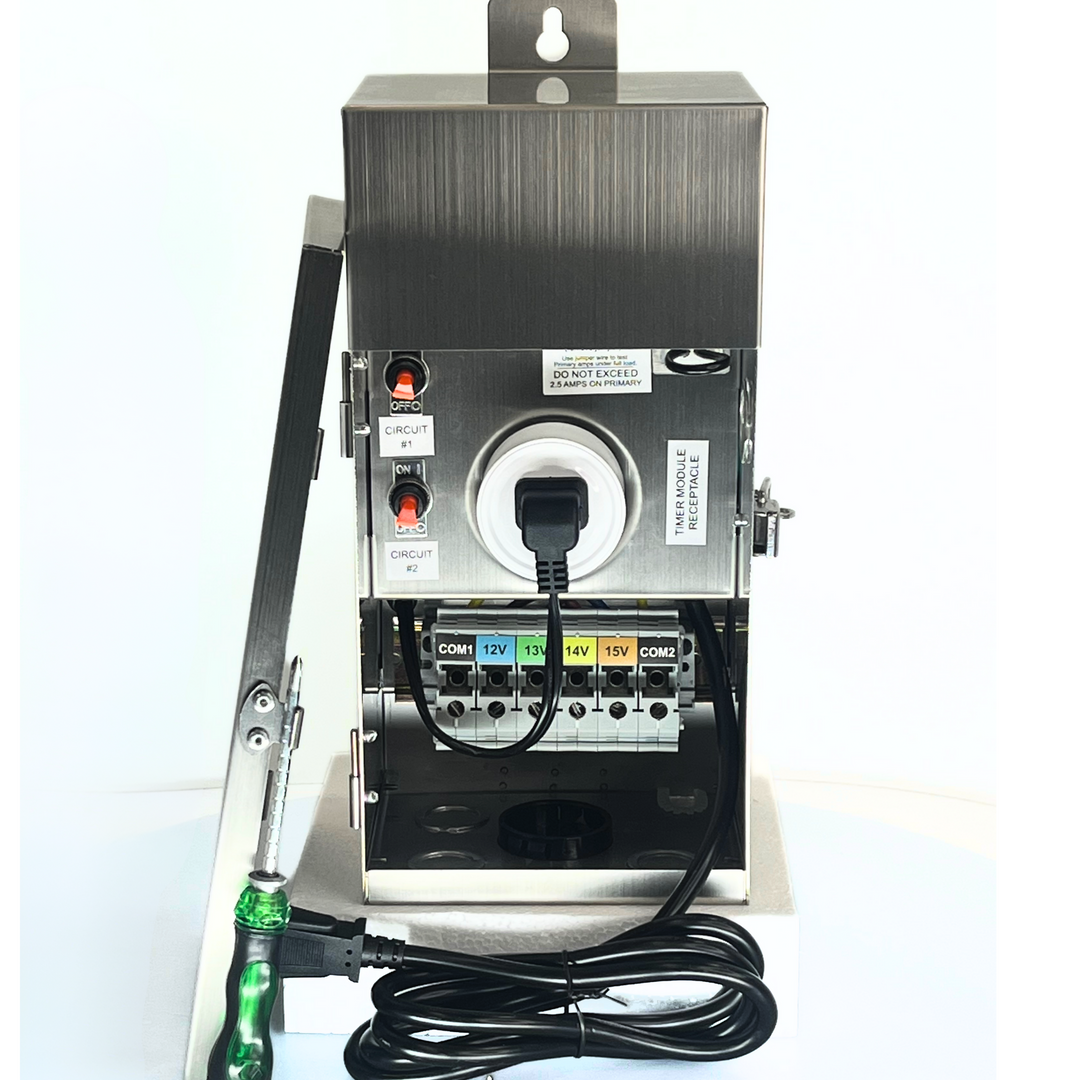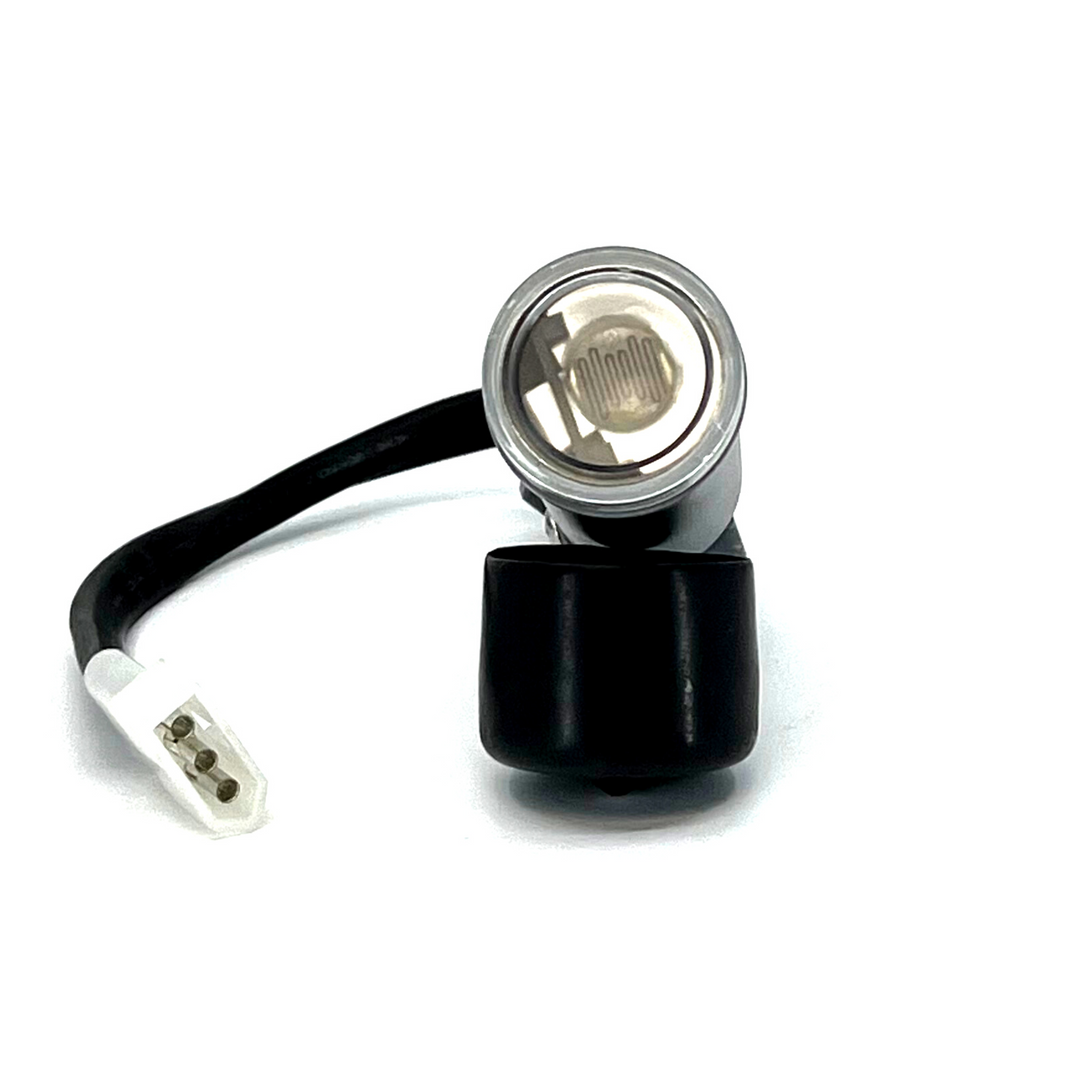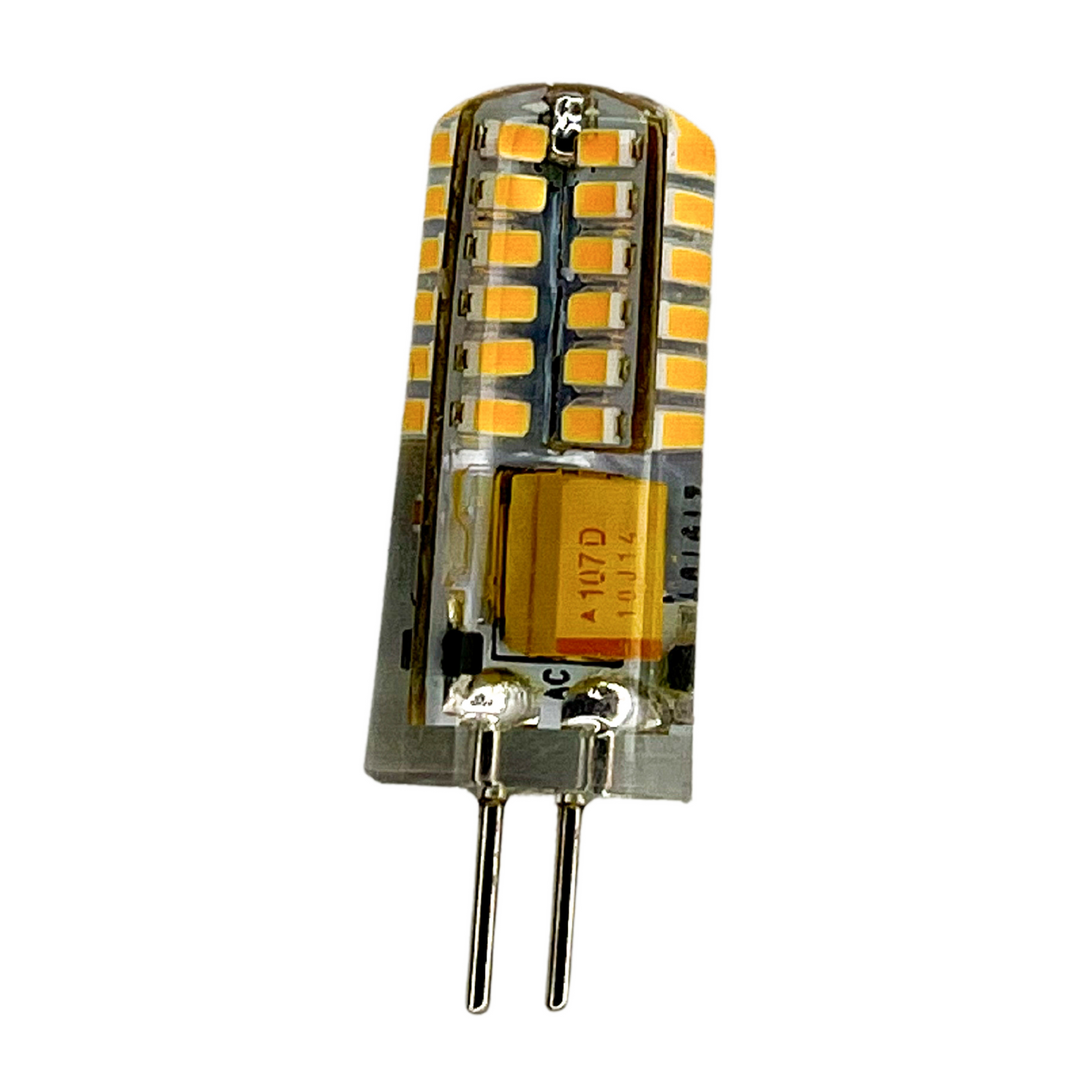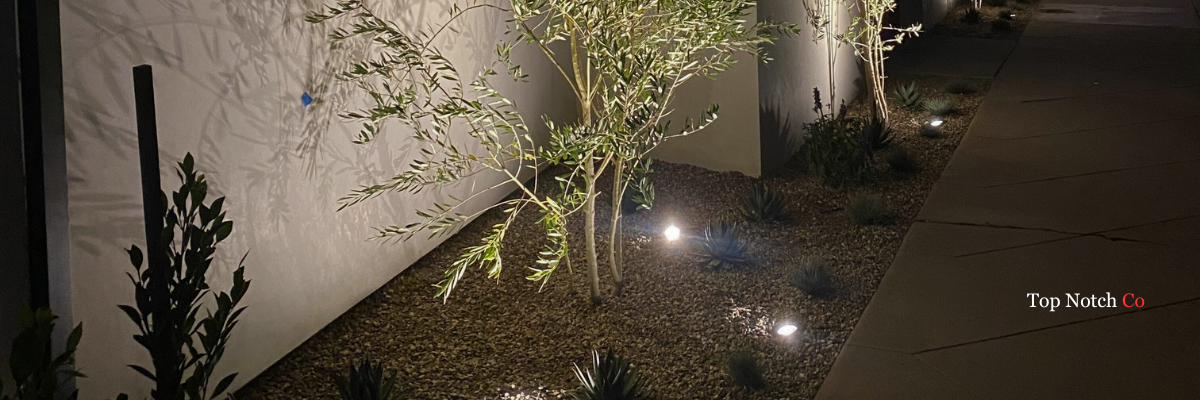
Go Green: Eco-Friendly Solutions for Your Landscape Lighting
|
|
Time to read 6 min
In an age where environmental sustainability is more than just a trend, integrating eco-friendly practices into every aspect of our lives, including outdoor lighting, is essential. Landscape Lighting not only enhances the aesthetic appeal and functionality of outdoor spaces but also provides an opportunity to contribute to environmental conservation. By choosing sustainable lighting solutions, homeowners can reduce energy consumption, minimize light pollution, and lessen the overall environmental impact. This article explores various eco-friendly lighting options, strategies to reduce light pollution, and tips for selecting and maintaining sustainable lighting products in your landscape.
Energy-Efficient Landscape Lighting Options
LED Lighting
LED (Light Emitting Diode) technology has revolutionized the way we think about lighting, particularly in outdoor environments. Unlike traditional incandescent bulbs, LEDs are incredibly energy-efficient, using up to 90% less energy. This efficiency translates to significant cost savings on energy bills and a reduced carbon footprint. Furthermore, LEDs have a much longer lifespan, often lasting up to 25 times longer than incandescent bulbs. This longevity means fewer replacements, which reduces waste and the environmental impact of manufacturing and disposing of bulbs.
LEDs are also highly versatile, available in various shapes, sizes, and color temperatures. This makes them ideal for a wide range of outdoor applications, from pathway lighting to highlighting garden features or architectural elements. Whether you want to create a warm, inviting atmosphere or a cool, modern aesthetic, LED lights can be tailored to meet your needs. Additionally, because LEDs do not emit much heat, they are safer to use in outdoor settings where traditional bulbs might overheat, reducing the risk of fires during dry summer months.
Solar-Powered Lighting
Solar-powered lighting harnesses the abundant and renewable energy of the sun to illuminate your outdoor spaces. During the day, photovoltaic panels absorb sunlight and convert it into electricity, which is stored in batteries and used to power the lights at night. This process is not only cost-effective but also environmentally friendly, as it reduces reliance on fossil fuels and decreases greenhouse gas emissions.
One of the significant advantages of solar-powered lighting is its ease of installation. Since these lights do not require any electrical wiring, they can be placed virtually anywhere, making them ideal for remote or hard-to-wire areas like garden paths, patios, or driveways. Furthermore, solar lights are generally low maintenance, requiring only occasional cleaning of the solar panels to ensure optimal performance. With advancements in solar technology, modern solar lights are more efficient and reliable than ever, providing bright illumination throughout the night even in less-than-ideal weather conditions.
Low-Voltage Lighting Systems
Low-voltage lighting systems are another excellent option for eco-friendly outdoor lighting. Operating at 12 volts instead of the standard 120 volts, these systems consume significantly less energy while providing ample illumination. Low-voltage lights are also safer to use, as they pose a much lower risk of electric shock. This safety feature makes them particularly well-suited for use around water features, walkways, and other outdoor areas where moisture might be present.
In addition to their energy efficiency, low-voltage Landscape Lighting systems offer great flexibility in design. They can be used to create subtle, ambient lighting or to highlight specific features such as trees, sculptures, or architectural details. With the right design, low-voltage lighting can transform your outdoor space into a welcoming and visually stunning environment, all while keeping energy consumption to a minimum.
Strategies to Reduce Light Pollution
Dark-Sky-Friendly Lighting
Light pollution is an often-overlooked environmental issue that can have significant impacts on both human health and local ecosystems. Excessive artificial light disrupts the natural patterns of wildlife, contributes to the decline of nocturnal species, and obscures our view of the stars. To combat these issues, dark-sky-friendly lighting has been developed to reduce the amount of light that escapes into the sky.
Dark-sky-friendly fixtures are designed to direct light downward, where it is needed, rather than allowing it to spill upwards or outwards. This design not only minimizes light pollution but also reduces glare, creating a more comfortable and effective lighting environment. By choosing dark-sky-friendly lighting options, homeowners can enjoy well-lit outdoor spaces without contributing to the degradation of the night sky. These fixtures are available in a variety of styles and can be used in gardens, along pathways, and around the perimeter of homes to create a beautiful, eco-friendly landscape.
Motion-Sensor Lighting
Motion-sensor lights are an excellent way to enhance both security and energy efficiency in your outdoor spaces. These lights are equipped with sensors that detect movement, activating the lights only when someone is present. This means that your lights are not on continuously, which conserves energy and reduces light pollution. Additionally, motion-sensor lights provide an added layer of security, as they can startle potential intruders and alert you to any unexpected activity around your home.
When installing motion-sensor lights, it's essential to place them strategically to maximize their effectiveness. Common locations include driveways, entryways, and around the perimeter of your property. By using motion-sensor lighting, you can enjoy a well-lit and secure outdoor space without the environmental impact associated with traditional, continuously operating lights.
Timers and Smart Lighting Systems
Integrating timers and smart lighting systems into your Landscape Lighting design is another effective strategy for reducing energy consumption and minimizing light pollution. Timers allow you to set specific times for your lights to turn on and off, ensuring that they are only in use when needed. For example, you might set your lights to turn off automatically after midnight, when outdoor activity typically decreases.
Smart lighting systems take this concept a step further by allowing you to control your outdoor lights remotely via smartphone apps or voice commands. These systems can be programmed to adjust lighting levels based on the time of day, weather conditions, or occupancy, further optimizing energy use. By using smart technology, you can create a more sustainable and convenient lighting system that adapts to your lifestyle while reducing your environmental impact.
Choosing Sustainable Lighting Products
Biodegradable and Recyclable Materials
When selecting outdoor lighting fixtures, it's crucial to consider the materials used in their construction. Choosing fixtures made from biodegradable or recyclable materials can significantly reduce the environmental impact of your Landscape Lighting. For example, fixtures made from bamboo, recycled glass, or metal alloys are not only durable but also environmentally friendly. These materials decompose more readily or can be recycled into new products at the end of their life, reducing the amount of waste sent to landfills.
Additionally, many manufacturers are now offering eco-friendly lighting options that prioritize sustainability in their design and production processes. By selecting products made from sustainable materials, you can contribute to the conservation of natural resources and support the growing demand for environmentally responsible products.
Innovative Eco-Friendly Lighting Designs
As awareness of environmental issues continues to grow, so too does the innovation in eco-friendly lighting design. Many designers and manufacturers are now focusing on creating lighting solutions that are not only functional but also sustainable. For instance, solar-powered lighting fixtures have become increasingly sophisticated, with improved battery life and more efficient solar panels. These advancements allow homeowners to incorporate solar lighting into their landscape designs more seamlessly and effectively.
In addition to solar lighting, other innovative designs include fixtures that integrate with smart home systems, allowing for greater control and energy efficiency. Some designs even incorporate renewable energy sources, such as wind or kinetic energy, to power the lights. By staying informed about the latest trends in eco-friendly lighting, homeowners can make informed decisions that enhance both the beauty and sustainability of their outdoor spaces.
Practical Tips for Eco-Friendly Outdoor Lighting
Designing with Natural Light
One of the most effective ways to reduce the energy consumption of your outdoor lighting is to maximize the use of natural light. Designing your landscape to take full advantage of daylight can significantly reduce the need for artificial lighting. Simple strategies like placing mirrors strategically to reflect sunlight, using light-colored surfaces to enhance brightness, and keeping windows and doors unobstructed during the day can make a significant difference.
Moreover, incorporating features like skylights, large windows, or open spaces in your outdoor design can allow natural light to flood your spaces, creating a warm and inviting atmosphere without the need for additional lighting. By balancing natural and artificial light, you can create a more energy-efficient and environmentally friendly landscape.
Maintenance and Sustainability
Maintaining your eco-friendly lighting systems is essential to ensuring their longevity and effectiveness. Regular maintenance, such as cleaning solar panels, checking wiring, and replacing bulbs with energy-efficient alternatives, can help keep your lighting in top condition. It's also important to monitor your lighting systems for any signs of wear and tear and address issues promptly to prevent energy waste.
When it comes time to replace or dispose of old fixtures, consider recycling them to minimize environmental impact. Many communities offer recycling programs for electronic waste, including lighting fixtures and bulbs. By recycling, you can help reduce the amount of waste that ends up in landfills and support
Final Thoughts
Adopting eco-friendly outdoor lighting solutions is a powerful way to enhance the beauty and functionality of your landscape while contributing to environmental conservation. By choosing energy-efficient options like LED and solar-powered lights, reducing light pollution through dark-sky-friendly and motion-sensor lighting, and selecting sustainable materials, you can create a landscape that is both visually stunning and environmentally responsible









